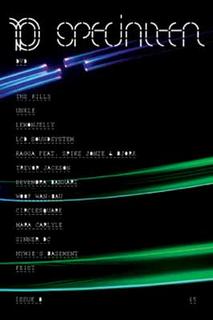
May You Live in Interesting Times
Cardiff Festival of Creative Technology
Thursday 27th October - Official Launch
My first visit to the Millenium Stadium and I'm sitting in the VIP seats drinking champagne. Amazing. Unfortunately there is no match on and the stadium is eerily empty. Tim Davies' Drumming is being shown on the digital billboards, the beats reverberating around the stadium. It is a bizarre experience, and I enjoy it for about 15 minutes, however it fails to sustain my interest for the 50 minute running time.
Friday 28th October - Conference: Day 1 - Locative Media and Emplacement
Of interest was Dr Martin Flintham from Mixed Reality Laboratory, University of Nottingham who spoke about their collaborations with Blast Theory. He spoke about the technical difficulties they faced with the game, e.g. GPS not always working. Martin explained that they decided to use the technical failures as elements in the game, adding to the user experience rather than disrupting it.
Jen Hamilton and Jen Southern discussed their residencency in Cardigan where they had been exploring 'the aesthetics of walking in place'. Basically they had provided people with GPS and asked them to go on a journey around Cardigan. Their route was mapped by the GPS system and a linear drawing produced illustrating each person's journey. It was interesting to see some of the patterns that people had made, e.g. one person drew a large eye in the sand and a dog armed with GPS had made very jagged route running along the beach. But unfortunately the artists did not seem clear on how they would use this data they had gathered. They were keen not to contextualise it, resisting the temptation to place the paths on a geographical map. However, with no context the data appeared nothing more than some pretty coloured lines on a white canvas.
Saturday 29th October - Conference: Day 2 - Gaming
Emma Westecott, University of Wales, Newport, emphasised the need to develop independent game production companies in order for the industry to evolve in more creative avenues. She discussed the trend of the large game companies to strive towards photo-realism in computer games, and how this was at odds with the concept of gaming itself: being able to explore different worlds and experiences, rather than replicate our world.
The afternoon session was particuarly interesting. Eddo Stern showed a selection of his work including Waco Resurrection (2003) and Tekken Torture Tournament (2001). Waco Resurrection was an attempt to politicise gaming, Eddo spoke about his interest in exploring the political arguments surrounding the events of Waco, in particular the overlap in views from the far left and far right spectrums of politics. Tekken Torture Tournament basically involved gamers receiving electric shocks to the arm as they played Tekken, bringing a real life pain experience to their virtual fighting competition.
What I found most interesting about Eddo's work was his desire to explore methods of politicising the computer game medium. In Sheik Attack (1999/2000) Eddo combined computer war games with pop nostalgia using the medium of film to make a powerful political statement.
Stuart Nolan, Nesta Fellow and Senior Lecturer, University of Huddersfield, added a more light-hearted note to the afternoon by convincing us in the importance of magic in play. His presentation was brief, but enjoyable and lively.
The Point, Cardiff Bay
The festival concluded with live music at The Point. An ecclectic range of entertainment formed the closing evening. Scanner mixed recordings he had made from around Wales. This was followed by Paul Granjon playing songs with his electric zitare including 'Nibble nibble little rat' an adaptation of 'Twinkle, twinkle little star'. Hilarious. It was a shame that his perfomance was followed up by The Durangos, a middle-of-the-road rock band who bored me stupid so I called it an early night.







